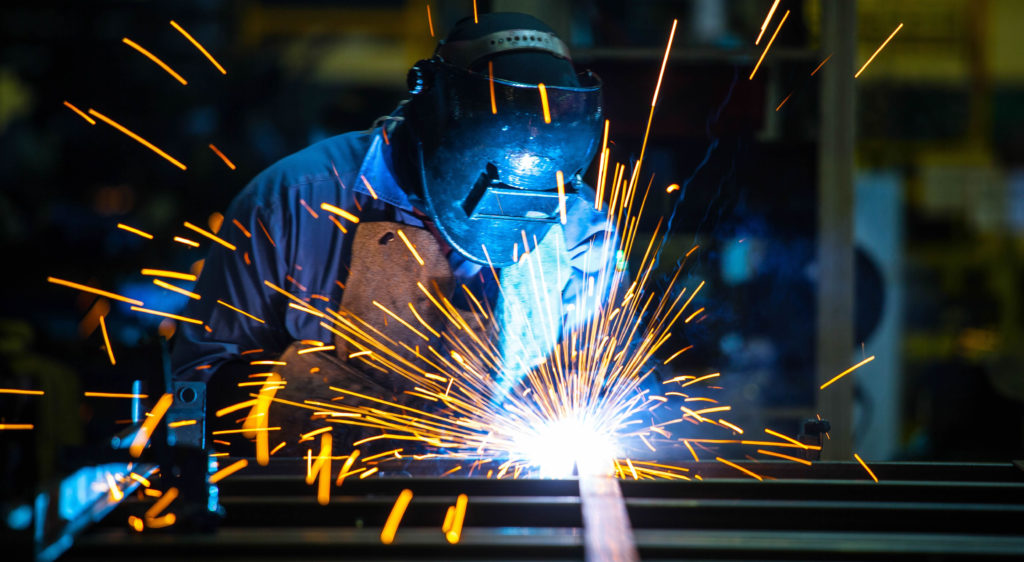Welding is an indispensable industrial process that is used across many sectors for joining materials through the application of heat or pressure. However, performing welding requires using specialized equipment which can vary depending on the type of welding process.
Arc Welding Equipment
Arc welding is one of the most popular and versatile welding methods where heat is generated by an electric arc between an electrode and the base material to melt the metals at the welding point. Some essential arc welding equipment includes:
Electrode Holders: Commonly known as welding torches or guns, electrode holders provide a sturdy grip to hold the electrode and allow a stable welding arc. Different holders are designed for specific processes like stick, MIG, or TIG welding.
Power Sources: The power source supplies electric current to the electrode and creates the welding arc. Different power sources include welding transformers for stick welding and constant voltage or constant current power supplies for MIG/TIG welding.
Cables and Connectors: Heavy-duty welding equipment cables carry high currents from the power source to the holder/torch. Connectors attach the electrode holder, work clamp, and power source securely.
Face Shield and Jacket: Personal protective equipment protects the welder from intense light and heat. Face shields have adjustable optical density lenses while welding jackets have leather and rubber insulating materials.
Filler Metals: Consumable electrodes like rods, wire, and fluxes are the filler metals that provide the heat required to melt the base metal and form a joint. The composition matches the base material.
Gas Welding Equipment
Gas welding, also known as oxyfuel welding, uses fuel gas and oxygen to generate a gas flame. Heating the base material causes fusion without an electric current. Equipment includes:
Oxygen and Fuel Gas Cylinders: Cylinders supply compressed oxygen and fuel gas like acetylene, propane, or hydrogen. Regulators control the pressure and flow rate.
Torches: Gas torches mix gas and oxygen in adjustable proportion to control the flame temperature required for heating and welding. Cutting attachments allow torch use for cutting as well.
Hose and Connectors: Heavy-duty gas hoses transport compressed gases from cylinders to the torch. Connectors join hoses, torch body, and cylinders securely.
Hand Shield and Jacket: As with arc welding, protective equipment shields welders from heat and ultraviolet radiation.
Filler Rods: For gas welding of similar materials, filler rods provide additional metal and strength to the weld joint.
Welding Equipment for Specialized Processes
Other important welding equipment is used for specialized welding processes with unique parameters:
Laser/Hybrid Welding – Lasers and optics focus an intense light beam. Manipulators position workpieces. Filler materials may not be needed.
Resistance Welding – Electrodes, welding controllers, and water-cooled stationery transformers apply localized heat from resistance.
Electron Beam Welding – Power sources, vacuum chambers, electron guns, power supplies, and welding controllers precisely direct and focus electron beams.
Plasma Arc Cutting – Gases, torches, and power supplies constrict an arc to intensely heat metal and expel molten waste. Ideal for cutting applications.
Robotic Welding – Computer numerically controlled manipulators, power sources, torches/holders, and interlocks automate and improve consistency of manual welding processes.
Welding Equipment Maintenance
Proper maintenance of welding equipment extends machine life and leads to quality, repeatable welds. Some best practices include:
– Clean gas nozzles, torch tips, and electrodes regularly
– Inspect welding cables, connectors, and clamps for damage
– Check calibration of power sources, controllers
– Keep compartments free of dust and debris
– Follow manufacturer service/inspection schedules
– Replace consumables and parts according to usage
– Store equipment properly when not in use
*Note:
- Source: Coherent Market Insights, Public sources, Desk research
2. We have leveraged AI tools to mine information and compile it




